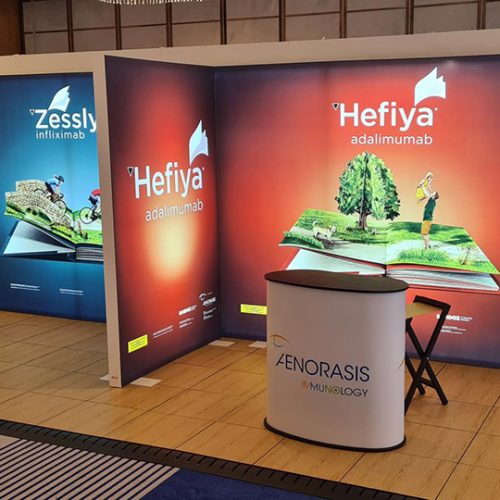Works
Stand Displays & Exhibitions- Events
Pop displays and LED textile displays are two types of marketing displays that businesses use to attract and engage customers. Pop displays, short for “point of purchase” displays, are physical marketing materials that are placed in strategic locations within a store to encourage customers to make a purchase. LED textile displays, on the other hand, use LED lights and digital technology to create visually engaging displays that can be used in a variety of settings.
Pop displays come in a variety of shapes, sizes, and materials. Some common types of pop displays include cardboard cutouts, floor stands, and counter displays. Pop displays can be used to promote new products, highlight special deals or promotions, or simply to draw attention to a particular area of the store. Pop displays are often eye-catching and can be designed to fit a specific theme or aesthetic.
LED textile displays, on the other hand, use digital technology to create dynamic and visually stunning displays. These displays are made up of rows of LED lights that can be programmed to display a variety of images and animations.
LED textile displays can be used in a variety of settings, from trade shows and events to retail stores and public spaces. They are often used to create immersive experiences that engage customers and leave a lasting impression.
One advantage of LED textile displays is their versatility. They can be designed to fit a variety of sizes and shapes and can be used to create both static and animated displays. LED textile displays can also be updated and changed easily, allowing businesses to keep their marketing materials fresh and up-to-date.
In summary, pop displays and LED textile displays are two effective marketing tools that businesses can use to attract and engage customers. Pop displays are physical marketing materials that can be used to promote products or draw attention to a particular area of the store, while LED textile displays use digital technology to create visually stunning displays that can be used in a variety of settings. Both types of displays have their advantages and can be used to create unique and engaging experiences for customers.

Textile Displays




